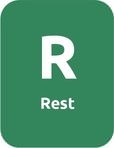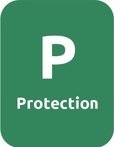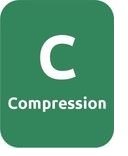An acute or recent injury can be improved by careful management of the initial period up to 72 hours. PRICE therapy is the best way to treat milder joint sprains and muscle strains. It reduces inflammation and swelling and helps to limit pain. This allows you to recover as quickly as possible.
PRICE stands for Protection, Rest, Ice, Compression and Elevation
Protection involves preventing the injured area from suffering further damage. It’s essential to stop the activity which is causing the problem. Using crutches, splints and supports to limit the stresses on the injured area may be necessary. The most protective devices are Plaster of Paris casts which are only needed for serious injuries.

Rest means reducing your regular physical activity so that the injured area has time to settle and heal. This might include using crutches, splints and slings but mostly it’s just necessary to be less active for a while. This will limit any increased circulation and inflammation to the area. This is the part that athletes and sports people have trouble with.
Ice is effective at reducing the inflammation caused by an injury. Putting a bag of ice on the damaged part for 10 to 15 minutes up to eight times a day can be useful.
It’s very important to have a wet tea towel or similar around the ice pack or you can get an ice burn on your skin. This is particularly vital if you use a pack from a freezer because the temperature of the pack is often -18C, cold enough to give you frostbite. Make sure it’s packed closely in contact with your skin. If there are small air-gaps you won’t get the cold effect you are looking for.
You should always lift the ice pack and check your skin after ten minutes to see what the colour change is. Normal is a pale reddish colour evenly across the skin where the ice is applied. If your skin is blotchy red and white remove the ice and don’t re-apply. It may not be suitable for you as you may have an abnormal response to cold. Continuing could cause skin damage.
Compression may be the most important thing to do immediately after an injury. Preventing swelling and inflammation before it really gets going helps to limit the effects the injury is having around the damaged part. Crepe bandages are suitable for most cases although other bandage types can be used.
Having someone else apply the bandage is much easier and having an expert do it is best of all. It is harder to do effectively than it looks. A bandage should be tight enough to limit the swelling and increased circulation but not tight enough to cause swelling or numbness in the injured part. Do not wear a compression bandage at night as you could be getting swelling and numbness and not be aware of it.
Elevation. Keep the injured area up above your heart if you can. This limits the amount of blood flow to the area and encourages the flow back from it, reducing swelling.
Sticking to the PRICE protocol can make a big difference to how long it takes you to recover. But the most important thing is to stop doing what’s caused the problem and not to go back until you are fully better.
Painkillers After Injury
Stopping the rise of pain after injury and limiting its effects is really important. So if you can take medications for pain it makes sense to do so. Paracetamol based painkillers may be the best choice to begin with. You may want to add an anti-inflammatory such as ibuprofen if you are medically safe to do so as they are known to increase the chance of gut bleeding. You should consult your doctor if you are unsure. Topical anti-inflammatories, ointments that you rub onto the injured area, have been shown to have some effectiveness.
When you take painkilling medication it is very important to take them regularly as stated on the box rather than waiting for your pain to be severe enough and then taking them. A regular dose keeps the drug levels up in your blood and allows you to do more normal movement, adding to the effectiveness of your recovery.
Rehabilitation
Getting back to where you were before the injury is the tricky part. The pain will discipline you to start with and you have to obey. Now comes the bit where you have to decide how fast to go and how much to do.
A good rule of thumb is to allow yourself at least two days of rehab time for every day of forced inactivity from your injury. You will start with gentle ranges of movement and progress with graded resistance until you are able to do weight resisted exercises for the part in question.
Stretching out the injured part is also very important. The healing process always involves formation of a scar and scars contract as they are maturing. You need to make sure the scar is long enough to allow normal function of the part.
References:
- Sports injuries – Treatment
http://www.nhs.uk/Conditions/Sports-injuries/Pages/Treatment.aspx - Acute Sports Injury Treatment using the P.R.I.C.E. Principle
http://www.sportsmd.com/injury-recovery/acute-sports-injury-treatment-using-p-r-c-e-principle/ - Harvard – Treating Sports Injuries
http://www.health.harvard.edu/newsletter_article/treating-sports-injuries
Last Review Date: 25-11-2017
Next Review Date: 25-11-2019




